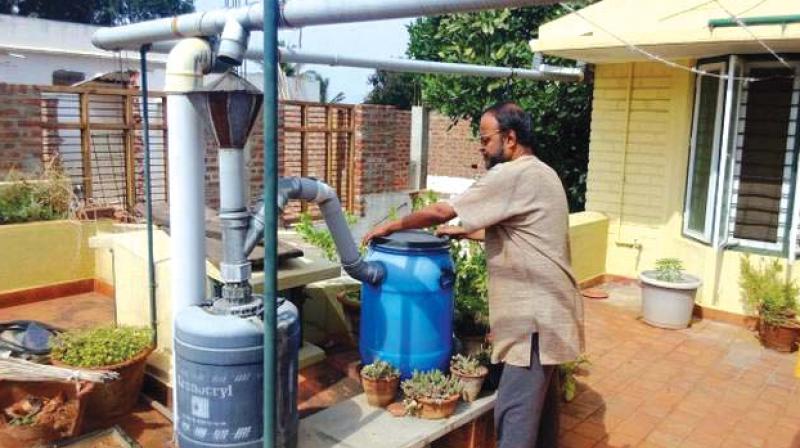Why stay parched? let's tap bounty from the heavens

The weathermen may have predicted a good monsoon this year, but the city is no nearer to saving the rainwater it receives despite the water scarcity it often faces, specially in summer . While concretisation of its Storm Water Drains prevents recharge of groundwater, not many appear to be taking rain water harvesting seriously either. Aksheev Thakur reports
With the skies overcast and rain lashing the city, the focus is once again on Rainwater Harvesting (RWH) , which though mandatory, is not taken seriously enough , depriving Bengaluru of a huge quantity of water that could help it tide over any crisis it may face come summer.
Over 58,000 houses in the city have still not installed rain water harvesting structures , according to the Bangalore Water Supply and Sewerage Board (BWSSB) , which claims to have collected over Rs 20 crore in penalty since August 2016.
With the Indian Meteorological Department (IMD) predicting a good monsoon this year, experts say it’s time people took RWH seriously in the interest of conserving water and minor drains are redesigned on a war footing to retain rain water.
“Besides conserving water, rain water harvesting can also reduce flooding on the roads. The city could get 4840 million litres per day from RWH, four times what it gets from the Cauvery, “ says water expert, S Vishwanath, who is also a member of the Knowledge Commission (water).
Although the BBMP has recently begun redesigning the storm water drains at BTM Layout and in Koramanagala to prevent flooding in the rain, he thinks it is too small an effort and believes the government needs to go about it on a larger scale.
“The SWD, especially the minor drains, should be designed to recharge the ground and the rest of the rain water should end up in lakes filtered through wetlands,” he suggests.
Dr Veena Srinivasan, a research scholar with ATREE, points out that although the storm water drains are meant to carry rain water, they unfortunately carry sewage. And in her view a major impediment to the installation of RWH structures is the high cost involved as not many can afford it.
Research scholar, Dr Sharachchandra Lele , meanwhile, believes that installation of rooftop rain water harvesting structures is hard in old buildings because of the cost involved in building sumps. “ A large sump is required to harvest the rain water ,but this is expensive. It is more feasible in new buildings rather than the old,” he says.
And he does not support penalising those who do not install RWH structures, arguing that this is unfair when additional costs are involved and the BWSSB does not give any rebate if people reduce their consumption of the water it supplies by relying on rain water.
“If we compare this with the solar water heater policy, BESCOM gave rebates for decades if people installed solar water heaters,” he notes.
Well rejuvenation efforts can help a lot
The rejuvenation of seven wells in Cubbon Park , which will now provide 65,000 to 85,000 litres of water a day for its upkeep, has cheered activists, many of whom are all for a return to traditional methods of sustainability to help the city deal with its water issues.
Mr Ram Prasad, co-founder and convener of Friends of Lakes, regrets that today the relevance of local wells has been lost following the introduction of deep borewells. Currently spearheading the Million Recharge Wells campaign along with water expert, S Vishwanath , he hopes that the Mannu Vaddar community, which is traditionally involved in digging wells, will be roped in to sink more of them to help the city with its water scarcity problem.
Experts like Dr TV Ramachandra, lead scientist at the Indian Institute of Science (IISc.), have other suggestions as well to tap rain water. He says the BBMP should stop concretising the storm water drains (SWDs) as this stops groundwater recharge and leads to flooding in the city during rain.
The agency’s thoughtless action in asphalting roots of trees in several parts of the city also upsets both experts and activists alike as it not only reduces the life of the trees but stops groundwater recharge as well. “While building drains they concretise the roots of the trees, which weakens their foundation. They should consult experts and the scientific cell of the BBMP before coming up with such bizarre measures,” says Dr Ramachandra..
Water expert, Kshitij Urs is also against the concretization of the SWDs. “And unfortunately, rivers are being turned into SWDs,” he regrets. The Indian Institute of Science (IISc.) too has warned against the concretization of SWDs, saying it leads to flooding, the best example being Koramangala’s fate in the monsoon last year.

